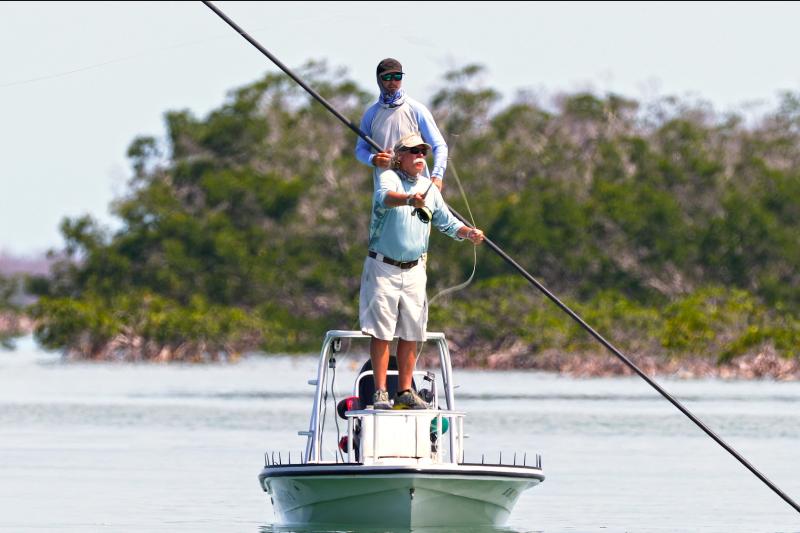The Southeast United States is world famous for its fishing opportunities. Year-round fishing, relatively moderate weather, and a wide variety of fish species makes this region truly special. One reason for the diversity and abundance of fish in the Southeast region—it is home to many types of productive marine habitats. These ecosystems are extremely valuable to fish and our coastlines, and anglers can help keep them safe by using safe fishing practices..
Fishermen know that fish gather seasonally, in and around certain habitats, for specific reasons at specific times. Some habitats provide shelter for young fish and protect them from predators. Other habitats offer shelter from strong waves and currents or provide the opportunity to sneak up on their prey. Often fish seek specific habitats to reproduce or to look for a specific prey type. Whatever the reason, anglers should learn about fish behavior and its dependence on healthy marine habitats.
Once a fish is caught, anglers should handle fish with care—whether they are releasing it to swim another day, or keeping it as a family meal for later that evening. It’s also important to care for and respect the habitats those fish depend on throughout their life. Learn about some of the unique and special ecosystems that are popular with anglers and how to help protect and preserve these essential habitats.
To fish safely in these habitats, remember:
- Know the fish you are targeting and the habitats they use
- Use caution when traveling through and fishing around sensitive habitats
- Properly anchor or stake your vessel to ensure sensitive corals and plants are not damaged
- Carefully retrieve snagged gear to prevent damage to the habitats and entangling wildlife
Coral Reefs
Bottom fishing in and around reefs is about as iconic as it gets for fishing in the Southeast. Coral reefs are slow-growing and depend on clean and clear water for survival. Around the world, many fisheries depend on coral reefs for their existence. Offshore of Florida and Texas and the waters surrounding Puerto Rico and the U.S. Virgin Islands, reefs are some of the most popular destinations for world class fishing. Anglers must treat these amazing habitats with care and respect.
Anglers can help protect coral reefs while fishing by carefully placing their anchor outside the reef edge or in a sand pocket within a reef complex. In minutes, a carelessly placed anchor and its chain and line can damage living corals that may take hundreds of years to recover. Not to mention an anchor can get snagged in the reef or even lost with the ground tackle. This results in financial loss of the angler as well the damage to the reef. Some places, like the three Marine Sanctuaries in the region, even have mooring balls for fishermen and divers to tie up to. This allows them to fish without having to use an anchor. There are also new GPS integrated electronic motors to hold a boat in place over a desired reef location without needing an anchor.
Additional guidance on how everyone can protect coral reefs
Seagrass Beds
Seagrass beds are found in shallow marine areas around the world. There are an estimated 2.7 million acres of seagrass off the Florida coast. Seagrasses absorb nutrients, improve water quality, and provide food and shelter for hundreds of species (including many reef species). They also absorb impacts from waves and erosion associated with storms, protecting property and coastlines. Highly sought after gamefish like snook, tarpon, redfish, bonefish, jacks and more live in and depend on seagrass for all or part of their lives.
Seagrass can be damaged by careless boat operation. Often, boaters run across seagrass beds and cut through the meadows with their propellers. Commonly known as “prop scars,” these cuts can permanently damage seagrass beds. When combined with storms or strong currents, these scars can grow and become large channels. These scarred seagrass beds may never recover. A damaged seagrass bed cannot support as many fish as a healthy one, so careful and smart vessel operation is crucial when navigating in and around seagrass habitats.
Here are some tips to reduce the chances of damaging seagrass communities, boaters should
- Be familiar with local waters where you plan to boat
- Stay in deep water and marked channels
- Wear polarized sunglasses to make reading the water easier
- Use up-to-date nautical charts
If you find yourself in water that is too shallow, stop immediately, turn off your motor, and trim your motor up to prevent further damage. Wait for high tide and carefully walk your vessel out to deeper water or call for help.
Mangroves
Many anglers daydream about a still morning drifting along a mangrove shoreline throwing a topwater plug as the sun rises. The quiet morning erupts in a spray of water and a ring of foam and the lure is now racing off at lightning speed in the jaw of a snook or tarpon. Many other popular fish species grow, forage, reproduce and live among the mangroves.
There are three species of mangroves in various areas of the Southeast and Caribbean. They can be recognized by their dense tangle of prop roots that make the trees appear to be standing on stilts above the water. This tangle of roots allows the trees to handle the daily rise and fall of tides.. The roots also slow the movement of tidal waters, causing sediments to settle out of the water and build up the muddy bottom. Mangrove forests stabilize the coastline, reducing erosion from storm surges, currents, waves, and tides. The intricate root system of mangroves also makes these forests attractive to fish and other organisms seeking food and shelter from predators.
One helpful tip when fishing in mangroves is to stake your boat instead of anchoring. Many anglers like to stay in one spot to focus their angling efforts. Anglers can use a strong and thin pole to stake into the sediment and tie their boat to it to remain in one place. Power poles and stakes are much easier than deploying an anchor and are less likely to injure seagrass that is often found growing around mangroves. Anglers can use mechanized (hydraulic and electric models) poles that, with the touch of a button, lower securely into the sediment and can be quickly raised chasing and fighting a fish.






